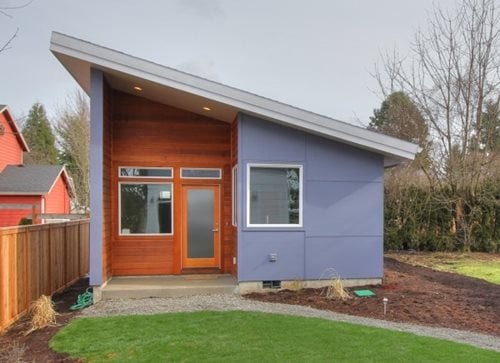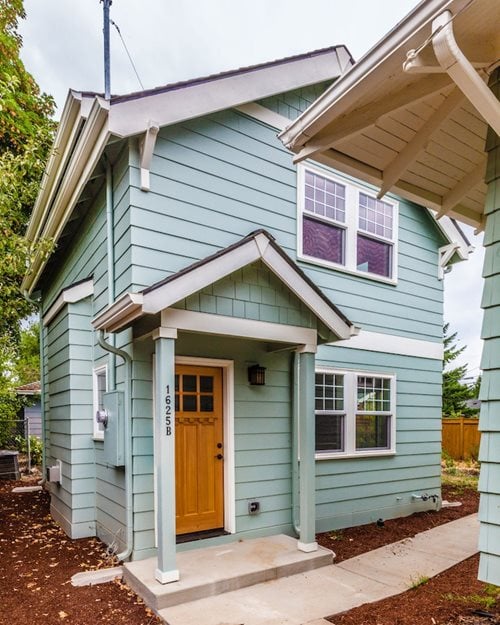Durham Community Land Trustees (DCLT) has a mission not unlike that of many NeighborWorks organizations: To create affordable housing opportunities. But each organization approaches that mission a little differently, and DCLT is no exception. The organization is furthering its mission with a new, innovative project, involving accessory dwellings and community land trusts.
When the organization was first founded in 1987, the charge was to revitalize and stabilize the community, particularly the city's West End, between Duke University and downtown Durham. DCLT, established by a group of neighborhood residents, wanted to create housing and, at the same time, fight looming gentrification and preserve homes that low-income owners and renters could afford.
They settled on the shared equity concept of the Community Land Trust, which was then a relatively new idea that allowed permanent community ownership of land, community governance, and permanent affordability from one owner to the next.
"It was a new concept in homeownership," recalls Selina Mack, executive director of DCLT. "We were probably among the first ten organizations in country to use it. There were a lot of questions and there was a lot of doubt about the model and whether it would stand the test of time."
The project did stand the test of time. And other organizations across the country began to consider land trusts as a path to homeownership. In Vermont, NeighborWorks organization Champlain Housing Trust remains the country's largest.
NeighborWorks America recognizes the need for affordability that lasts beyond one family or one generation, says Shanti Abedin, NeighborWorks' director of Shared Equity Housing. That's why the organization is investing in ways to help people think about affordable housing in the long term, especially as neighborhoods face gentrification, like Durham's West End. NeighborWorks' new Shared Equity Housing Initiative is meant to help networks build knowledge and capacity using shared equity and cooperative housing models, including Community land trusts.
Next month, at a symposium that's part of NeighborWorks America's Winter Virtual Training Institute, panelists will focus on the many aspects of shared equity housing. The VTI, to be held February 15-19, will also feature courses with in-depth training on shared equity.
 "Shared equity achieves a number of goals for neighborhoods," Abedin says. "It provides permanent or long-lasting affordability. It gives community members who otherwise wouldn't be able to access homeownership a path to shared ownership that helps them build wealth. And it can stabilize communities: it preserves subsidies in the place itself and keeps the home affordable for the next family."
"Shared equity achieves a number of goals for neighborhoods," Abedin says. "It provides permanent or long-lasting affordability. It gives community members who otherwise wouldn't be able to access homeownership a path to shared ownership that helps them build wealth. And it can stabilize communities: it preserves subsidies in the place itself and keeps the home affordable for the next family."
The model's centering of community ownership and resident leadership also aligns with NeighborWorks's mission. Abedin says the structure of community land trusts often allows community members to have more of a say in the use of land and the presence of affordable housing in their community.
This is the first national event on shared equity that NeighborWorks has executed in a long time and should appeal to a broad audience. "I hope that participants who are new to the concept of shared equity are excited about the possibilities it holds for communities to create more permanent, affordable housing and create more inclusive neighborhoods," Abedin says.
An innovative way of providing more affordable housing
Mack says that in 2005 as the economy started slowing down, DCLT made a strategic expansion to rental housing. "Nobody was in that space and there was a desperate need for affordable rental housing," she says. As neighborhoods started to appreciate in value and gentrify, DCLT began to move out of the West End to other neighborhoods where land was more affordable. The organization expanded its footprint and its reach. Coupled with a recent change in Durham's zoning laws, the organization also expanded its ideas about the ways a community land trust could be used.
This new concept of utilizing the CLT model earned the organization a $50,000 innovation grant from NeighborWorks America for its CLTplusOne project. The grant will allow the organization to explore using accessory dwellings as income-earning rental properties for CLT homeowners. The move would increase affordable housing opportunities while providing rent to homeowners and, accordingly, putting homeownership within easier reach for lower income families.
"The city expanded the possibility of building accessory dwellings (ADUs) on a single lot," Mack says. "They reduced some of the restrictions for setbacks and allowed larger units to be built."
Accessory dwellings up to 800 square feet are now permitted. That's larger than the average size of an apartment in Manhattan and Los Angeles and smaller than the 959-square-foot average for apartments in nearby Raleigh, according to the New York Times.
"With these changes, we can better utilize the concept on the land we already own to increase the volume of affordable housing units in Durham," Mack says. Building density on land they already own is beneficial as the cost of land goes up and the competition to acquire land increases.
"This innovation grant is a challenge we have to accept," Mack says. "Housing costs in Durham are out of reach for low-income families and fewer are being added due to higher construction costs." Her hope is that the additional rental income from the accessory dwellings will allow homebuyers on the land trusts to increase their purchasing power.
Mack sees benefits for homeowners as they age, too. As their children age and move out, the homeowner could take over the accessory dwelling and rent out the larger home instead. Or they can create an intergenerational living plan. "It allows for transitions," she says.
While the idea of accessory dwellings is becoming more popular nationwide, coupling them with a community land trust is new. As with a traditional land trust, DCLT will continue to own the land, while the home and accessory dwelling will be owned by the buyer. DCLT plans to manage the rental unit for the buyer, too – something they're used to, since they already manage hundreds of rental units. "It's win-win for all parties," Mack says.
The organization plans to hold a summit to talk with real estate and banking professionals about the project, to make sure there's buy-in. Mack says the hope is to start construction early next year. She adds that the accessory dwellings could also be added to the organization's traditional rental properties. And that brings the organization back to its original goal: increasing affordable housing opportunities in Durham.
Mack will speak about the plan and answer questions during a panel at this year's VTI.
Sign up for the VTI here.
01/22/2021

